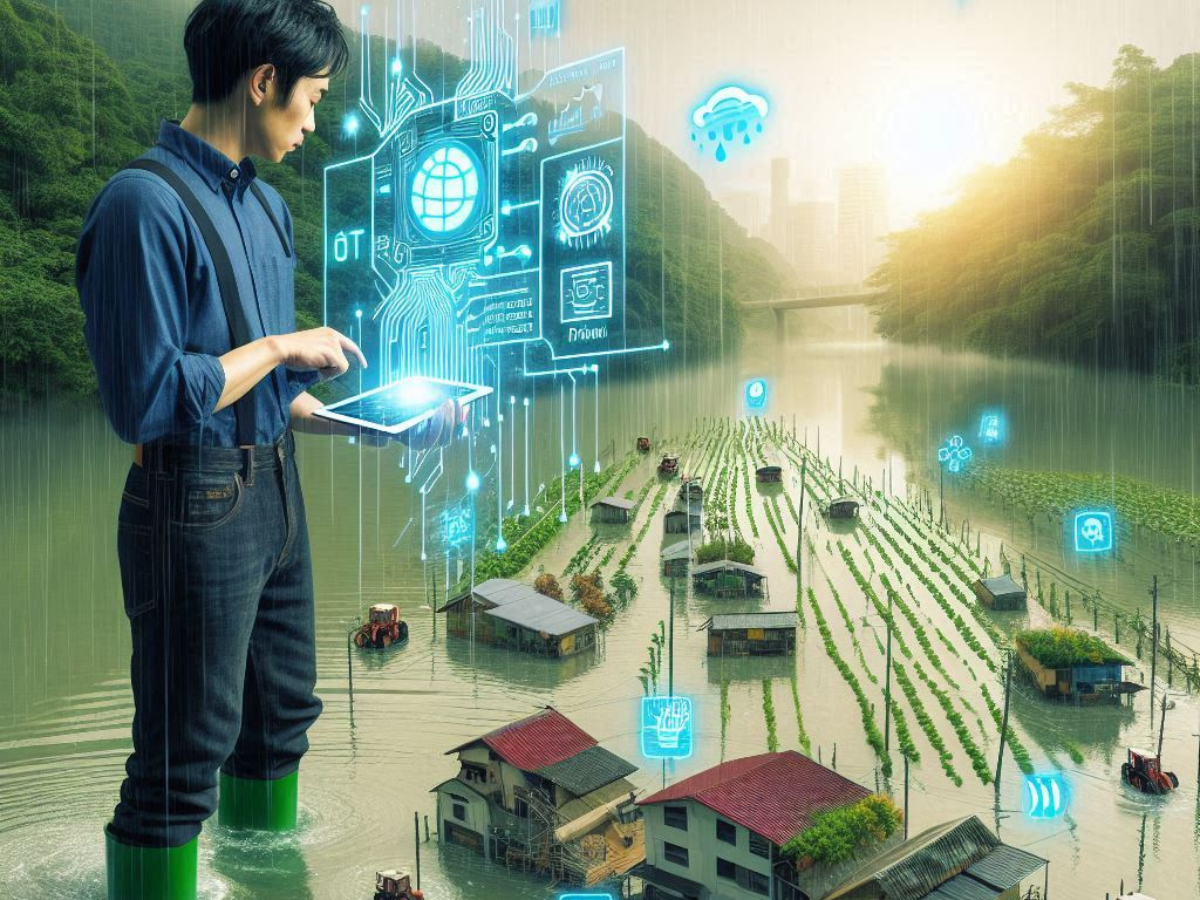Policy and IoT: Developing Frameworks to Support Smart Farming in Disaster- Prone Areas

In the face of increasingly unpredictable weather patterns and the growing frequency of natural disasters, farmers in flood and landslide-prone areas are under constant threat. Traditional farming methods often fall short in these volatile conditions, leading to significant losses and jeopardizing livelihoods. However, the advent of IoT (Internet of Things) technology offers a beacon of hope. By integrating IoT into agricultural practices, we can enhance disaster preparedness and resilience. To fully harness this potential, robust policy frameworks are essential.
Understanding IoT in Agriculture
IoT technology in agriculture involves using interconnected sensors and devices to collect and analyze data on various parameters such as soil moisture, weather conditions, crop health, and more. This real- time data empowers farmers to make informed decisions, optimize resource use, and implement timely interventions to protect their crops from potential disasters.
The Need for Policy Support
Despite the clear benefits of IoT in farming, widespread adoption faces several barriers. High costs, lack of technical knowledge, and limited access to advanced technologies are significant hurdles, especially for smallholder farmers. This is where policy intervention becomes crucial. Government policies and frameworks can facilitate the adoption of IoT by addressing these challenges and creating an enabling
environment for smart farming.
Incentivizing IoT Adoption
One of the primary ways policies can support IoT integration is through financial incentives. Subsidies, grants, and low-interest loans can make IoT technologies more affordable for farmers. Additionally, tax breaks for companies developing agricultural IoT solutions can stimulate innovation and reduce costs.
Capacity Building and Education
Education and training programs are vital to ensure farmers can effectively use IoT technologies. Policies should mandate the inclusion of IoT and smart farming techniques in agricultural extension services Establishing demonstration farms and training centers can provide hands-on experience and build farmers’ confidence in using new technologies.\
Infrastructure Development
Reliable internet connectivity and power supply are fundamental for IoT implementation. Policies must prioritize the development of rural infrastructure to support the deployment of IoT devices. Public-private partnerships can play a pivotal role in extending internet and power infrastructure to remote and disaster-prone farming regions.
Data Management and Security
With the increased use of IoT, data privacy and security become significant concerns. Policies need to establish clear guidelines for data ownership, sharing, and protection. Ensuring that farmers retain control over their data while facilitating the secure sharing of information for broader agricultural insights is essential.
Collaborative Efforts
Developing effective policy frameworks requires collaboration among various stakeholders, including government bodies, research institutions, technology providers, and farmers’ organizations. Regular consultations and feedback mechanisms can ensure that policies are well-informed and address the real needs of farmers.
IoT technology holds immense potential to transform agriculture, particularly in disaster-prone areas. By developing supportive policies, governments can help farmers adopt smart farming practices, enhance resilience, and secure livelihoods. Through financial incentives, education, infrastructure development, and robust data management, we can pave the way for a sustainable and disaster-resilient agricultural future.






